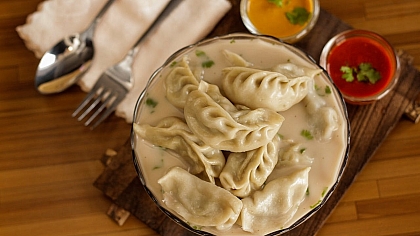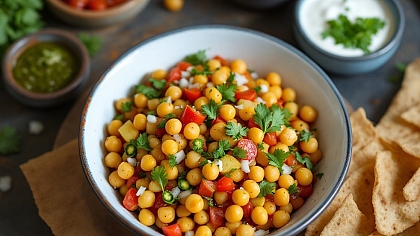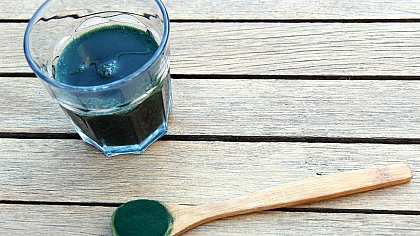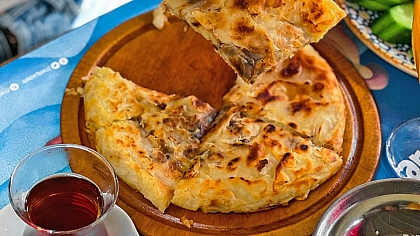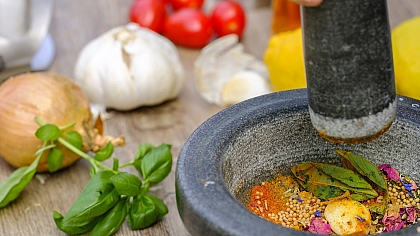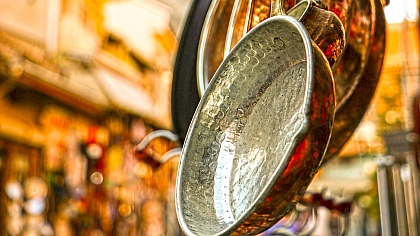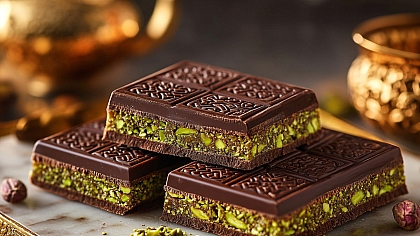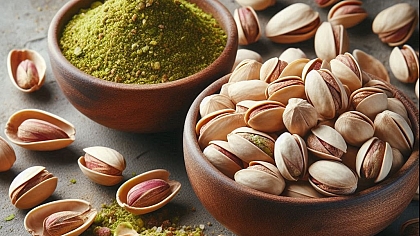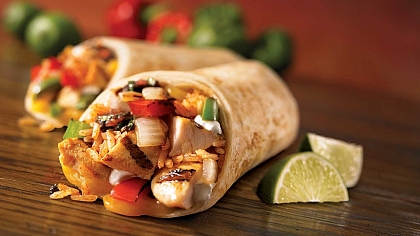
Top 10 Foods from Turkey
As a country that is located on the continents of both Europe and Asia, and with a history that dates back to centuries of cultural influences from across the globe, it is not surprising that Turkey can be considered to be the culinary capital of the world, and quite rightly so.
Likewise, due to the expansion of the Ottoman Empire, the countries close to Turkey including Greece, Bulgaria and Albania have adopted many of the Turkish cooking techniques and have made their regional versions of traditional Turkish dishes over the years too. There is something astonishingly good about the delicious flavours of Turkish cuisine, and this is what has inspired cuisines from other parts of the world.
Here are some of the most popular Turkish foods that you must try on a trip to Turkey or perhaps recreate in your own kitchen:
Adana Kebab
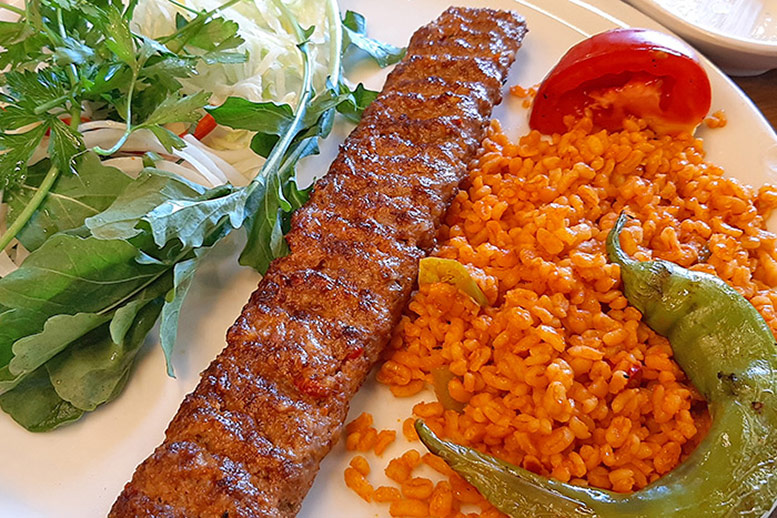
Named after the fifth largest city in Turkey, the Adana kebab was originally known as Kıyma kebabı and is a long minced meat kebab on a skewer that is cooked over a mangal (a Middle Eastern barbecue). The kebabs are normally made from ground lamb meat and tail fat; interestingly there are strict rules to adhere to to produce an authentic Adana kebab.
The meat is typically taken from a male lamb under one year old, cleaned and cut into shanks alongside tail fat with a ratio of one to five. The meat is then ground by hand with the addition of sweet red peppers and salt (there may be different variations depending on which area the kebab is being made).
Water is added to the mixture to allow the meat to stick to the skewer and this is the trickiest part of making the kebab, too much water will result in the meat falling off the skewer while cooking. The Adana kebab is then cooked on a charcoal grill until it is dark brown, as it is being cooked, flatbreads are pressed against the kebab to collect the melted fat.
The Adana kebab is either served unwrapped with grilled tomatoes known as porsiyon or wrapped in thin bread known as dürüm; the most common beverages drunk with the kebab are ayran and Şalgam. Although Adana kebabs are made in Turkish restaurants all over the world, there is a patent for it to identify which places produce the original kebab to preserve its authenticity.
The method above describes the preparation of the original Adana kebab. There are many varieties however and all are just as delicious.
Chicken Döner

Also known as döner kebap, döner is made from pieces of seasoned meat stacked in a cone shape and cooked on a vertical rotisserie, hence the name döner, which means 'to turn' or 'to rotate'. It is a very popular dish and nearly all countries seem to have their own version of the döner kebap.
The method of cooking on a vertical rotisserie was invented by the Ottomans in the 19th century and various dishes have been inspired by the traditional döner including the Arab shawarma, Greek gyros, and Mexican al pastor.
There was already a dish in the Ottoman Empire known as cağ kebab which was meat cooked on a horizontal rotisserie; according to some, a man named İskender Efendi, from the town of Bursa, decided to grill it vertically in his father’s restaurant and the idea was successful. This type of vertical kebab became known as döner.
Döner can either be eaten in a wrap with salad, pickles and sauces or with either rice or bulgur wheat. Popular choices of meat used for döner are chicken or lamb (the lamb has a distinctive dark brown colour so it is easy to differentiate from chicken which is light brown), with some places offering a mix of both.
There are many variations of döner in Turkey but the authenticity and the location the meat is sourced from means that it isn’t as bad for your health as döner can be in other places. The shaved “döner kebab” slithers of processed meat often served up in Western eateries are generally not even cooked by Turkish people who have mastered the art and the meat can be from questionable sources, the level of hygiene of the places it is served is also often frowned upon.
Nevertheless, döner kebabs in places like Britain are as popular as fast food and are often eaten with salad in a wrap or with chips (Before trying döner kebab from Britain be sure to check the hygiene rating of the restaurant/fast food joint!).
Flatbread with Minced Meat Kıymalı Pide
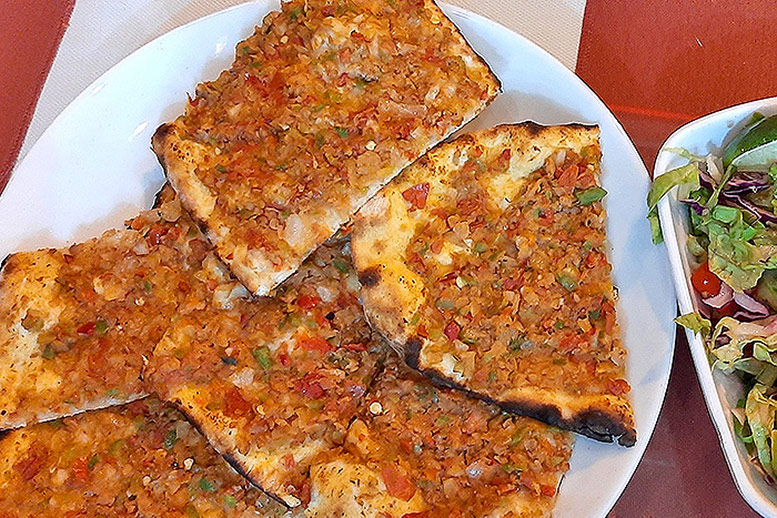
Dubbed the “Turkish pizza”, pide is a flatbread covered with various toppings and can somewhat resemble a pizza, although cheese isn’t added to a pide (unless you find a restaurant that serves peynirli pide, also known as cheese pide).
The two Turkish dishes pide and lahmacun are both flatbreads topped with ground meat but what makes pide so special? Lahmacun is a thin flatbread topped with ground minced meat and is normally eaten with a squirt of lemon juice and rolled up. Pide on the other hand is thicker than lahmacun and is oval-shaped almost like a boat, due to the thickness of pide it is served in slices, and often comes topped with an egg or melted butter.
There are many different delicious toppings for pide but the most common type is Kıymalı Pide which is topped with minced meat; it is a popular street food option in Turkey.
Vegetarian Raw "Meat" Balls Çiğ Köfte
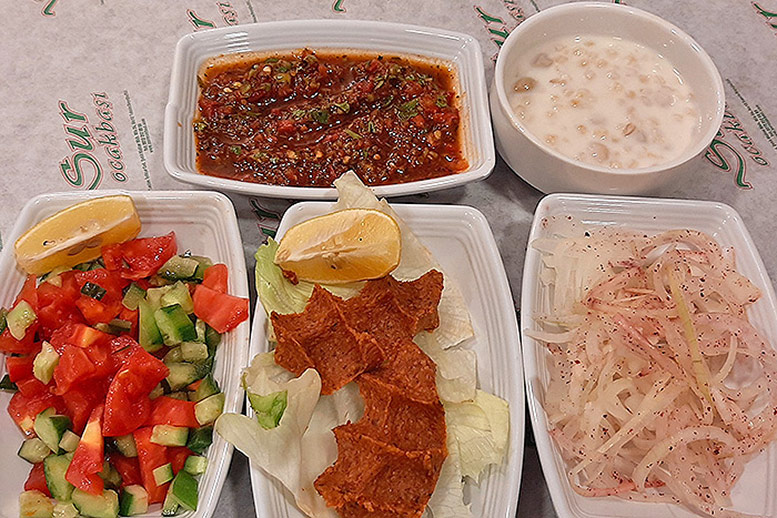
Although the original çiğ köfte recipe uses raw meat and there are various ways for it to be prepared, fast food joints in Turkey are prohibited from selling it due to food-poisoning risks so a vegetarian version is served instead.
Vegetarian çiğ köfte are made from bulgur grains, walnuts, hazelnuts and potatoes and some recipes include pomegranate molasses. It is commonly eaten in a lettuce leaf and tends to be spicy so a generous amount of ayran is drunk with it to counter the fiery flavour.
The Turks are very generous people and çiğ köfte is often served on the house when you dine in a Turkish restaurant, along with a few other complimentary side salads that come with a generous helping of chopped parsley and a good sprinkling of sumac.
Stuffed Mussels Midye Dolma
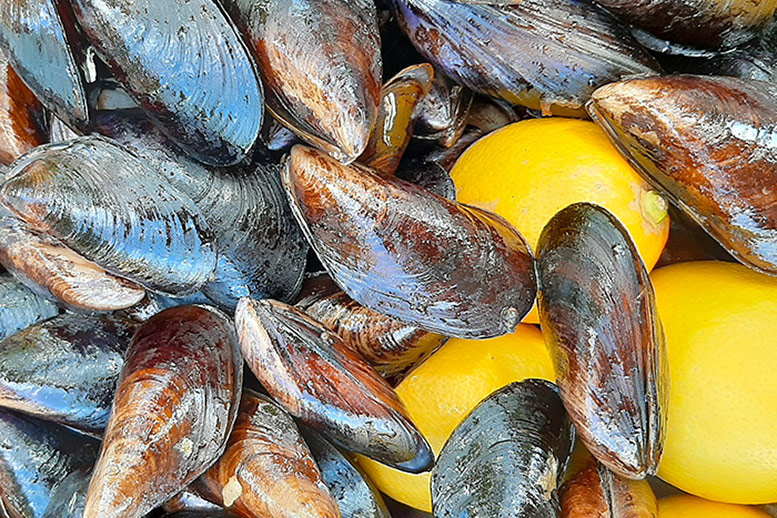
A common street food snack in Turkey, midye dolma consists of large orange mussels stuffed with spiced rice, pine nuts and currants. It was historically made by the Armenians in the Ottoman Empire.
Pickles Turşu
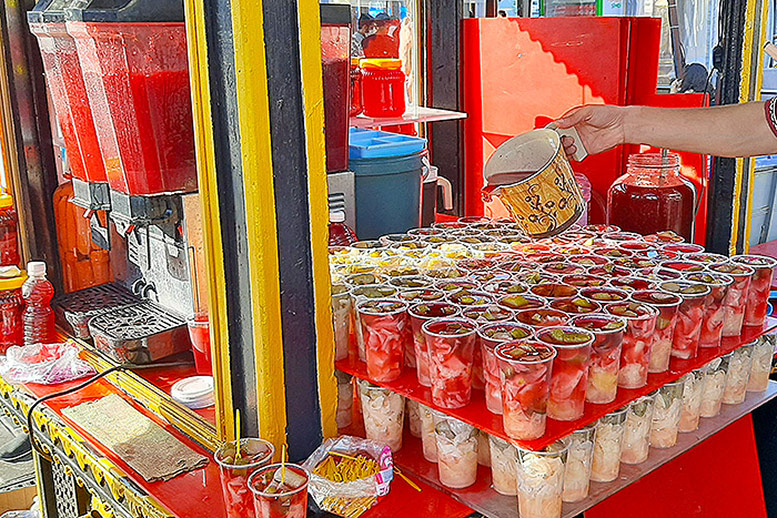
Originating from the Persian word torsh meaning sour, turşu is an assortment of pickled vegetables used in Turkish cuisine and eaten with most meals, especially kebabs. These pickles have a rich, sour taste and must be tasted by anyone who loves pickles.
In Turkey, the liquid from turşu is served as a cold drink in the summer and is known as turşu suyu or “pickle juice”.
Chestnuts & Corn on the Cob Kestane ve Süt Mısır
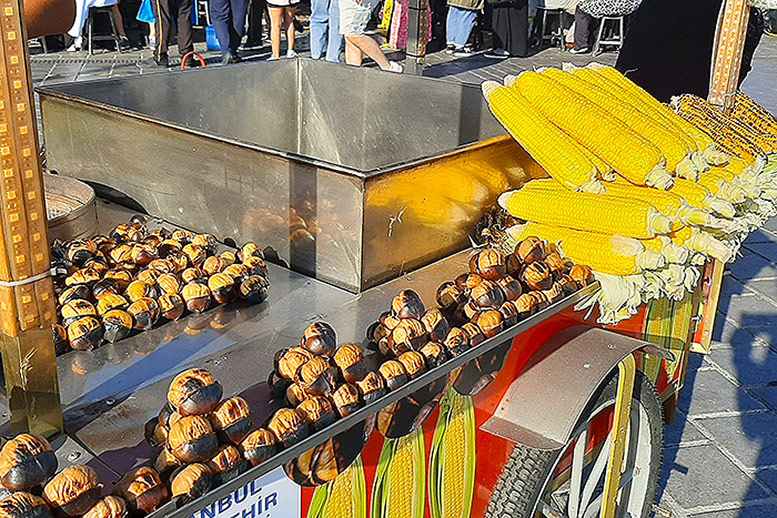
Chestnuts, or kestane, are a tasty but healthy snack alternative and can be bought from street vendors, no trip to Turkey is complete without trying these natural delicacies that have been roasted.
If you are out on the streets in Turkey and want a light snack but don’t know what to get, the answer lies in süt mısır or corn on the cob. Corn is super tasty and not to mention healthy. It can be purchased fresh from street vendors and they can be bought either boiled or grilled.
Turkish Delight Lokum
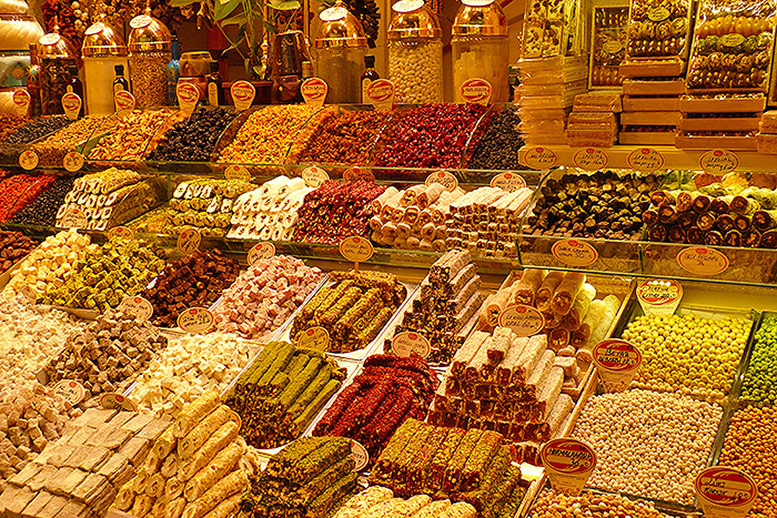
Made from starch and sugar, Turkish delight, or lokum, is famous all over the world and is a delicious treat. It is believed to have been invented in the kitchens of the Ottoman palace and is an absolute treat it's an ideal souvenir to take home from a trip to Istanbul.
Turkish delight is made in cubes that are dusted with icing sugar and rolls that have been made with honey, filled with nuts or nut butter and then coated with desiccated coconut, sliced nuts, or even dried rose petals.
Known as lokum in Turkish, it comes in many flavours too, some of the most popular ones being rose, lemon, pomegranate, pistachio and hazelnut.
Semolina Halva with Ice Cream Dondurmalı İrmik Helvası
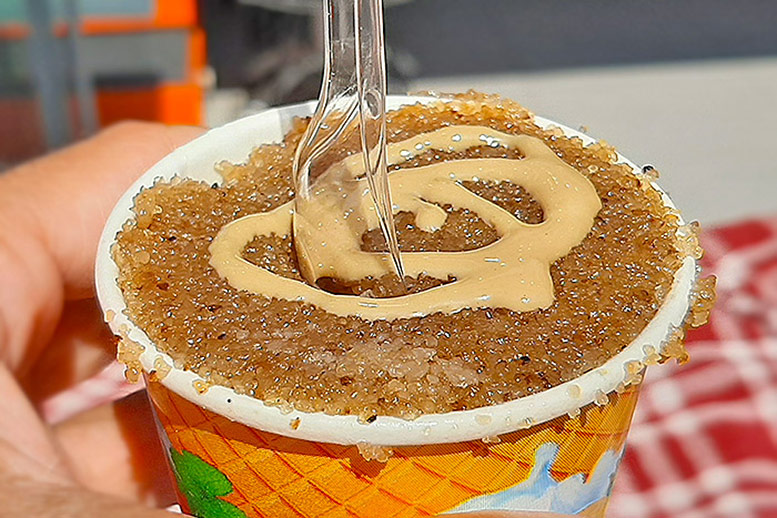
Turkish semolina halva is made from coarse semolina and not semolina flour, and although the ingredients used to make this dessert are simple, it requires a high level of skill to make it correctly. Semolina halva is a real Turkish masterpiece.
İrmik Helvası can also be served on top of dondurma, which is a type of Turkish ice cream made using mastic (plant resin) giving it an extremely stretchy and unique texture. Dondurma is simply delicious and the texture depends on what region it is made in, some varieties are so stretchy that they have to be eaten with a knife and fork.

